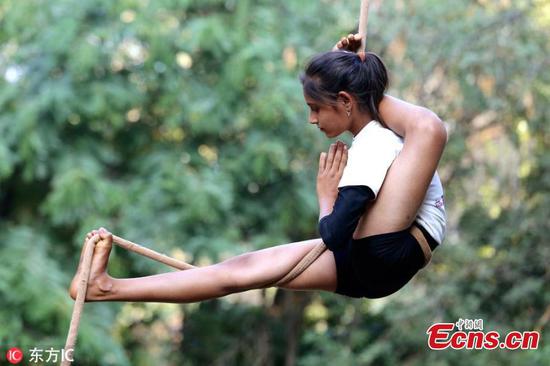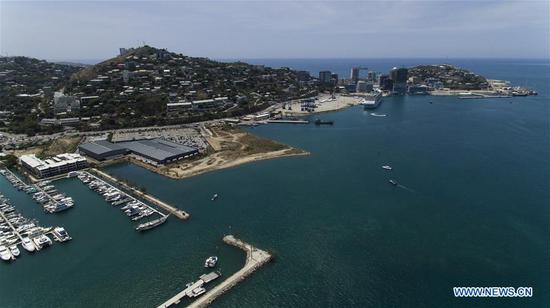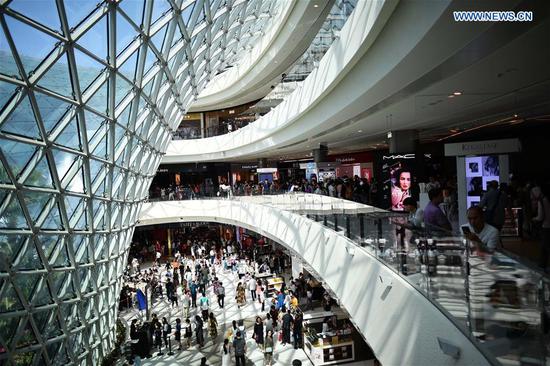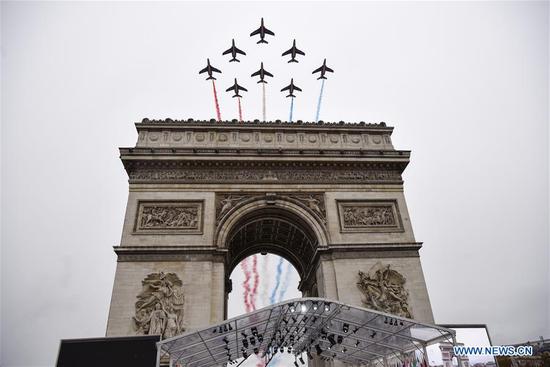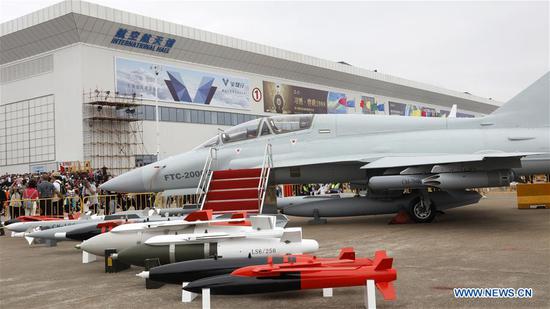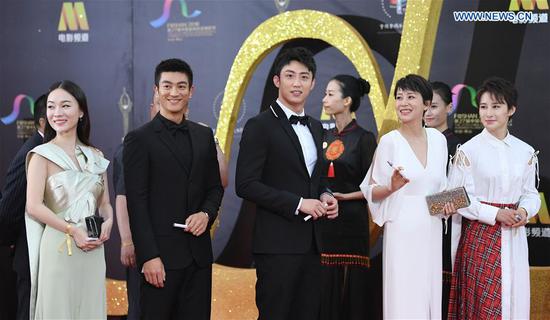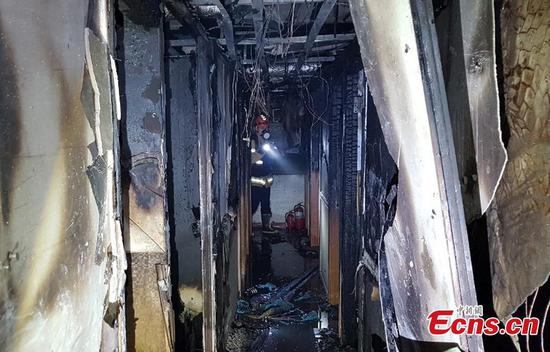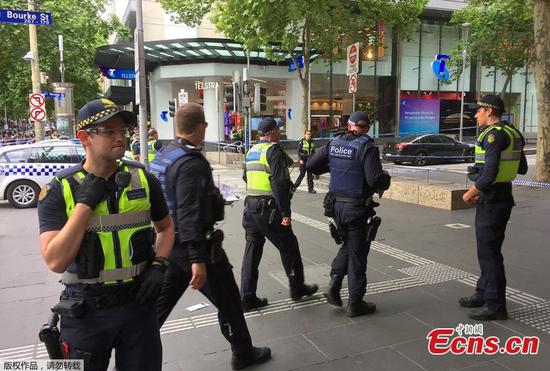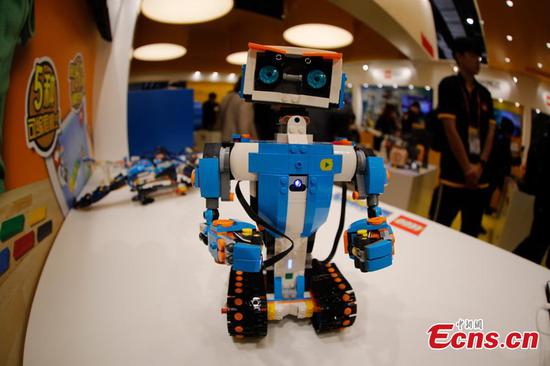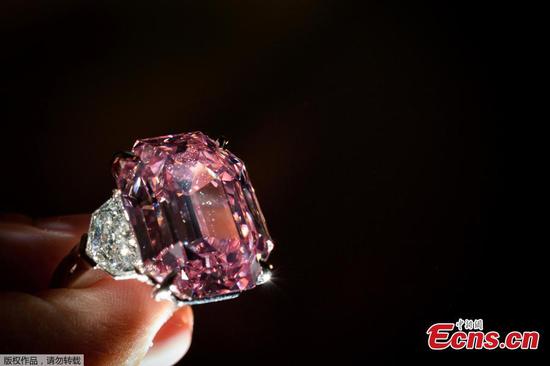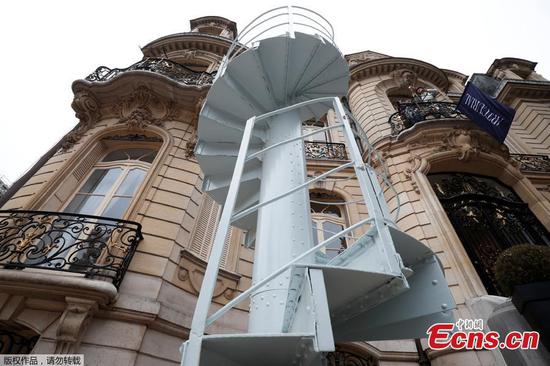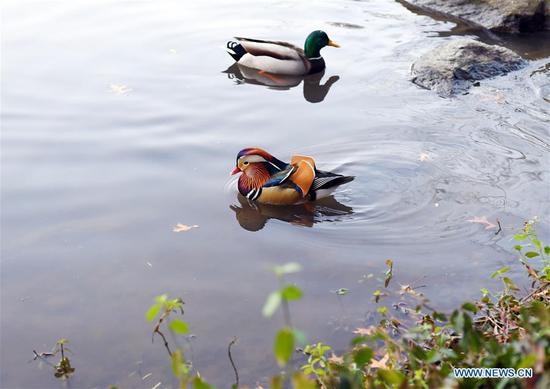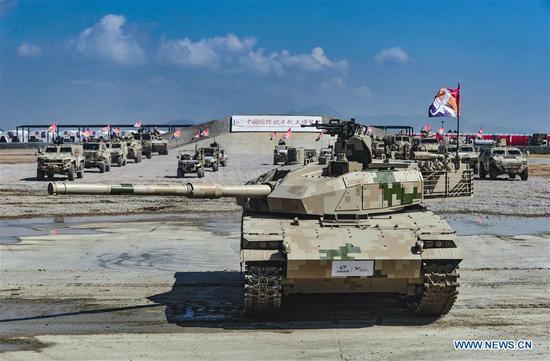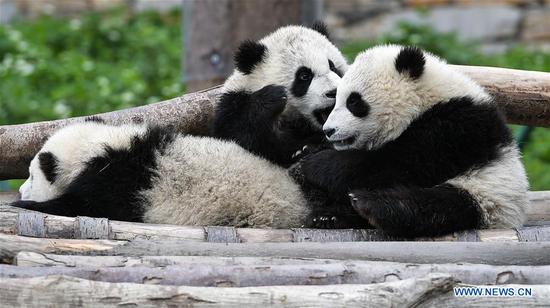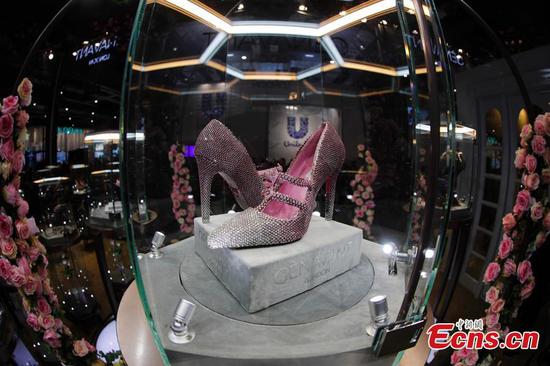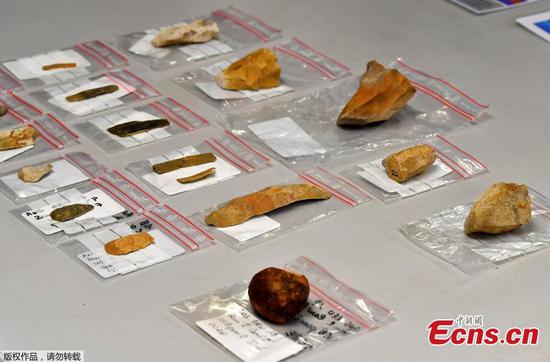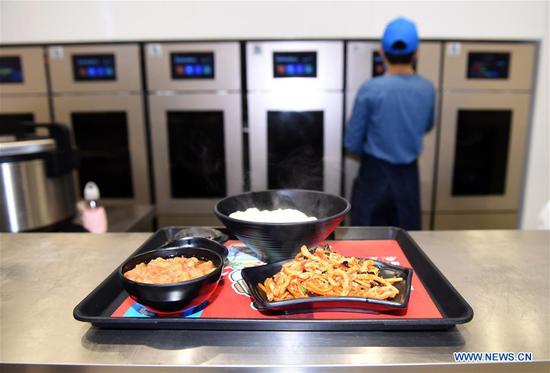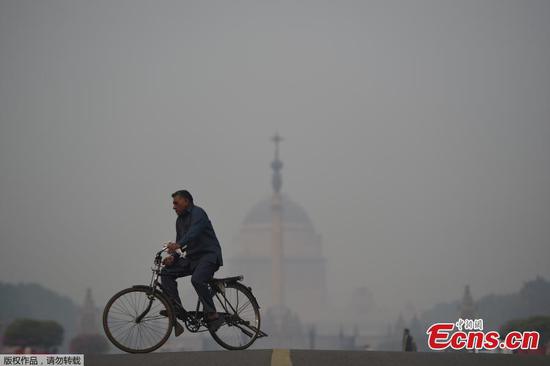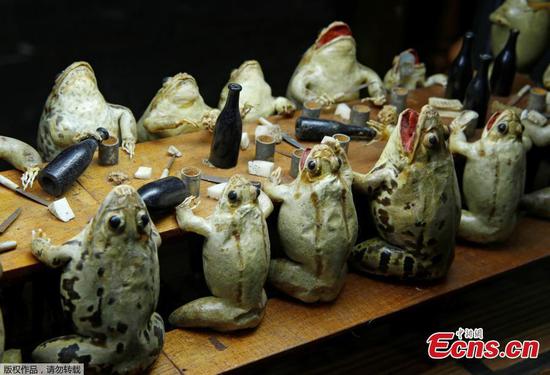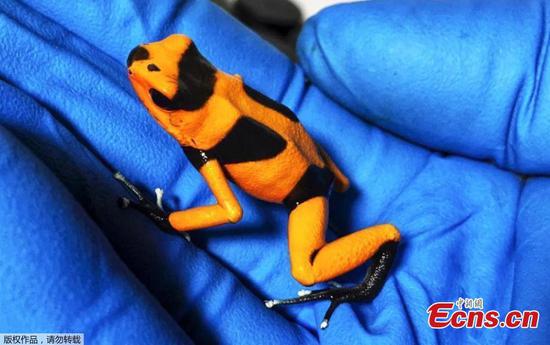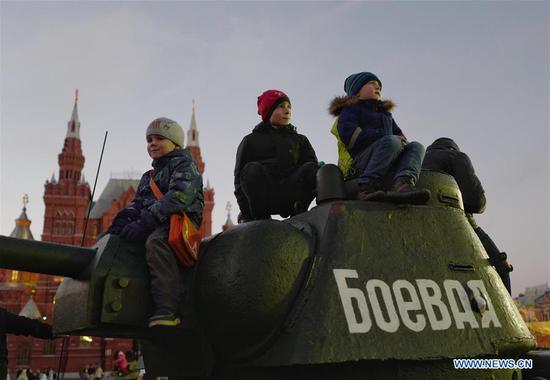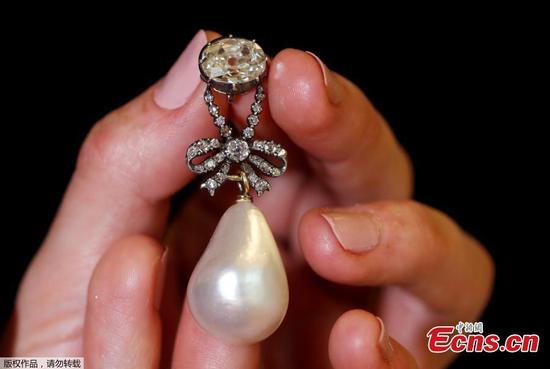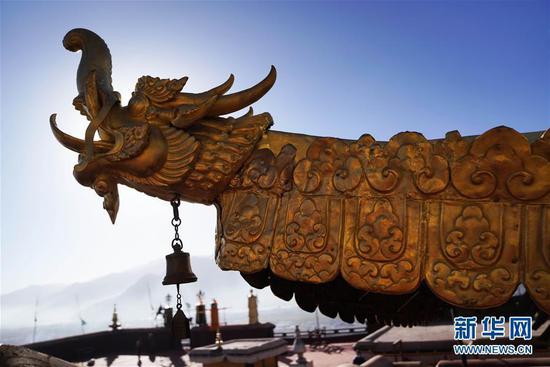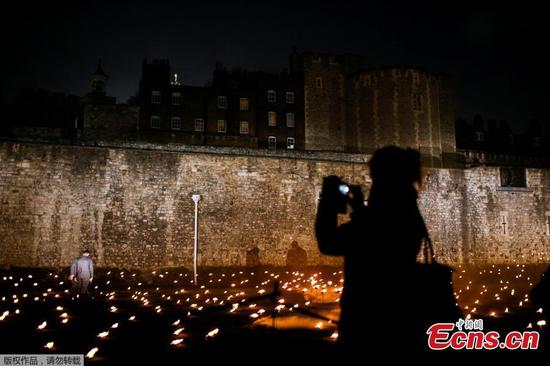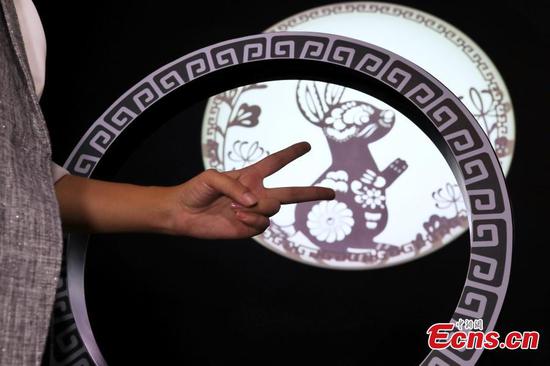
PLA Air Force J-20 stealth jets on display at Zhuhai (Photo by ZHANG WEI/CHINA DAILY)
Yang Wei, deputy general manager of Aviation Industry Corporation of China and chief designer of the J-10B, said the stunt display signaled that China has joined a handful of aviation powers that have the all-important thrust vector control technology. He added that the success should be attributed to joint efforts by his company, Aero Engine Corporation of China, along with a test flight team from the People's Liberation Army Air Force.
He said that to achieve supermaneuverability, a fighter jet not only needs a thrust-vectoring-capable engine, but also a good aerodynamic design, outstanding compatibility between the engine and the inlet, and unique flight-control equipment.
Wang Haifeng, chief engineer of the J-10B thrust-vectoring technological demonstration program, said designers overcame many technical difficulties and took several innovative approaches to build the J-10B test bed.
Responding to a reporter's question about whether the J-20 stealth fighter jet, the Chinese military's top combat plane, will be equipped with thrust-vectoring-capable engines in the future, Yang did not give a direct answer, but hinted that some J-20s have already been fitted with such engines.









